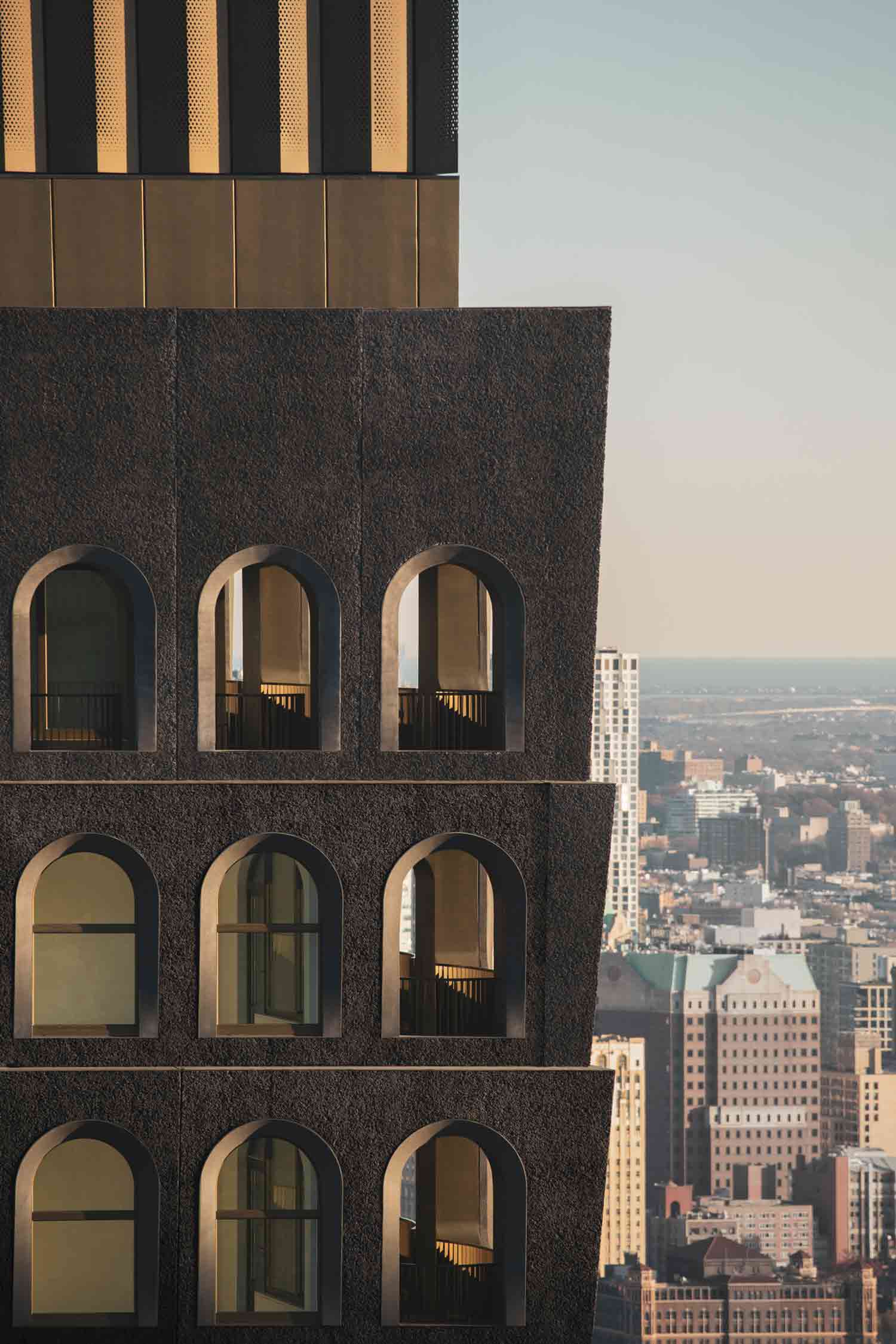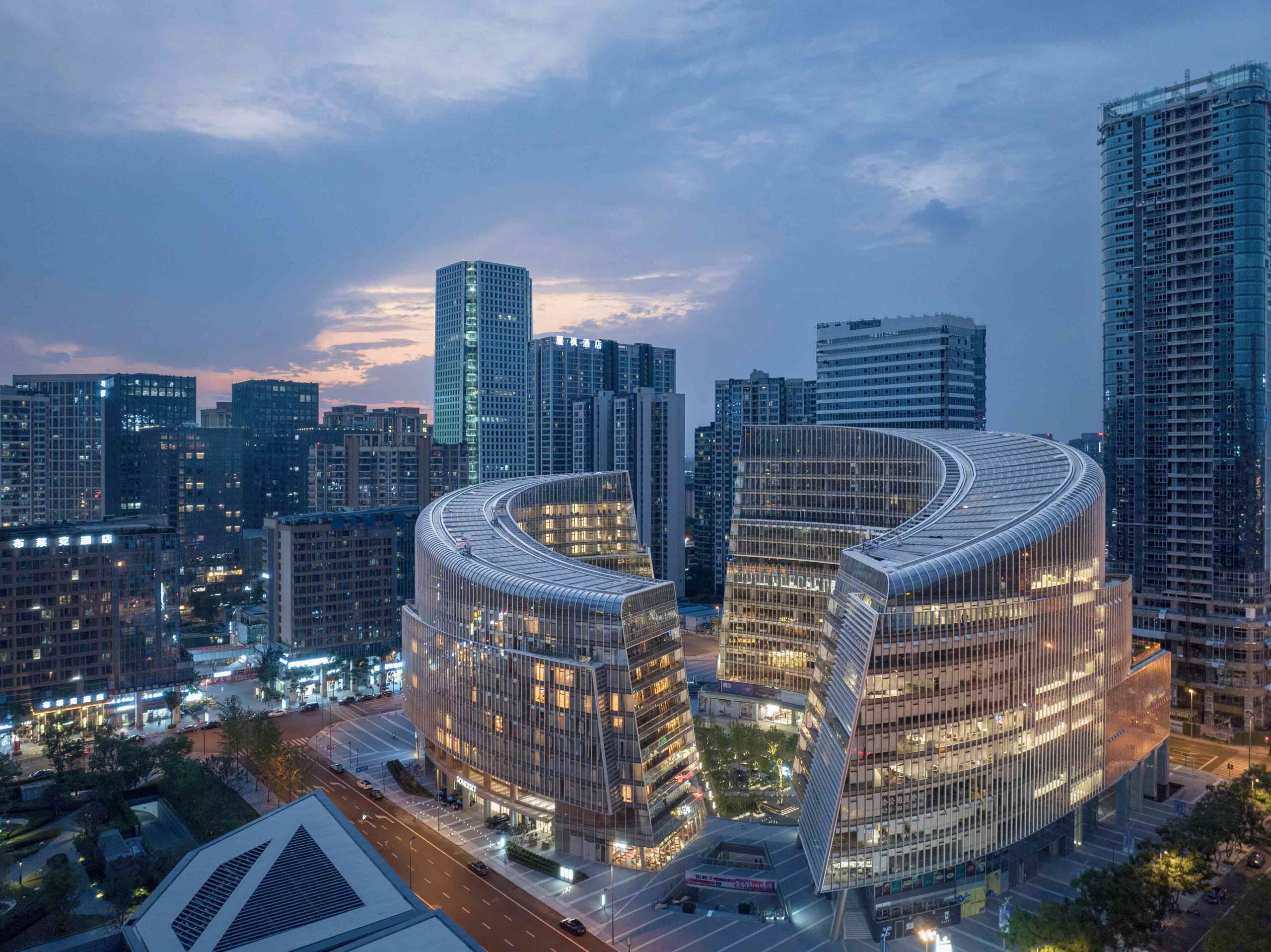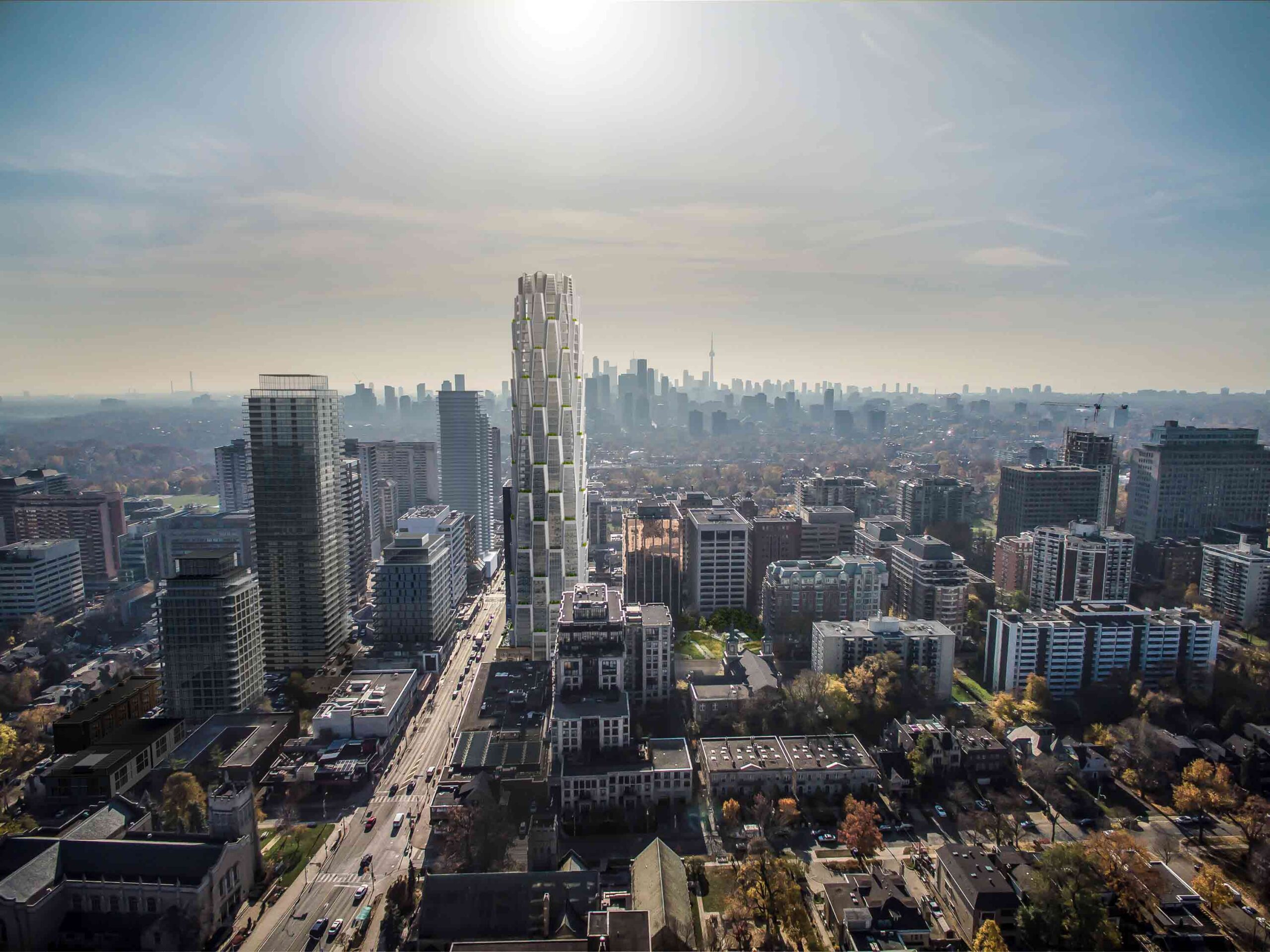Raising the Benchmark: 7 Ways Architects Are Elevating the High-Rise in 2023
The latest edition of “Architizer: The World’s Best Architecture” — a stunning, hardbound book celebrating the most inspiring contemporary architecture from around the globe — is now available. Order your copy today.
The imposing monolith of the urban landscape, the high-rise has been a defining feature of global skylines since the 19th century. And the upward surge has only intensified in recent decades as square footage becomes a scarcer and more valuable commodity in our densely packed cities.
However, the high-rise is a much-changed beast from its early iterations. Far from anonymous edifices, architects are leading a vertical revolution and reinvigorating these sky-high structures. From bustling microcities to bastions of biodiversity and buzzing community hubs, discover how these winning projects from the 11th A+Awards are raising the benchmark of high-rise design.
1. Paying Homage to The Past
130 William by Adjaye Associates, Manhattan, New York
Jury Winner, 11th Annual A+Awards, Multi Unit Housing – High Rise (16+ Floors)

 Soaring 66 stories above the glittering melee of lower Manhattan, 130 William is a residential neighborhood articulated in a bold, vertical volume. Comprising 242 housing units, fitness and health centers, a movie theater, two floors of retail stores and a park plaza, the infrastructure of the urban street has been skillfully condensed and elongated to slot seamlessly into the frenetic skyline.
Soaring 66 stories above the glittering melee of lower Manhattan, 130 William is a residential neighborhood articulated in a bold, vertical volume. Comprising 242 housing units, fitness and health centers, a movie theater, two floors of retail stores and a park plaza, the infrastructure of the urban street has been skillfully condensed and elongated to slot seamlessly into the frenetic skyline.
The structure’s spatial plan is cutting-edge, yet its façade has been carefully engineered to honor the site’s architectural history. The rugged, hand-cast concrete exterior evokes the charm of the area’s heritage high-rises. Meanwhile, the rhythmic repetition of arched windows harks back to the old mercantile buildings that once peppered the landscape.
2. Entwining Architecture and Ecosystems
Periférico 2008 by BRAG Arquitectos, Mexico City, Mexico
Popular Choice Winner, 11th Annual A+Awards, Multi Unit Housing – High Rise (16+ Floors)

 This pioneering residential tower in vibrant Mexico City is an eloquent fusion of architectural and organic topographies. Remarkably, 20% of the construction area has been given over to gardens and planting, thanks in part to two extraordinary three-story voids. For distant onlookers, they act as widows to the city, framing rather than obscuring the varied terrain.
This pioneering residential tower in vibrant Mexico City is an eloquent fusion of architectural and organic topographies. Remarkably, 20% of the construction area has been given over to gardens and planting, thanks in part to two extraordinary three-story voids. For distant onlookers, they act as widows to the city, framing rather than obscuring the varied terrain.
For residents, these unusual apertures are home to verdant sky gardens that float above the urban sprawl. Their lofty scale accommodates around 200 trees — here, the built realm respectfully yields to biodiversity. The tower’s orientation was deftly orchestrated to maximize natural light and ventilation. Swaths of insulated glass break up the expanses of white concrete panels and place the stunning exterior plantscape center stage throughout the minimalist interior.
3. Prioritizing Public Space
Guangci Charity Park Social Housing (Design Build Project E) by KHL Architects & Planners, Taipei City, Taiwan
Popular Choice Winner, 11th Annual A+Awards, Sustainable Multi-Unit Residential Building

 Nestled in the midst of Taipei City, this complex of four high-rises offers an innovative solution to the region’s affordable housing needs. Ranging from one- to three-bedroom units, the project offers accessible, modern living spaces designed with the environment and wider community in mind.
Nestled in the midst of Taipei City, this complex of four high-rises offers an innovative solution to the region’s affordable housing needs. Ranging from one- to three-bedroom units, the project offers accessible, modern living spaces designed with the environment and wider community in mind.
Public green spaces are woven throughout the fabric of the towers, encompassing outdoor activity areas, flourishing terraces and elevated urban gardens that utilize rainwater harvesting and greywater systems. Elsewhere, much-needed community parking has been installed at basement level, while amenities such as shops and outreach agencies enrich the social offering. The interior environment is of paramount importance too. Heat-resistant concrete and low-emissivity glass ensure the temperature in each apartment is well-regulated, with energy recovery ventilation guaranteeing clean, fresh air for residents.
4. Embracing the Urban Environment
800 Fulton Market by Skidmore, Owings & Merrill (SOM), Chicago, Illinois
Jury Winner, 11th Annual A+Awards, Office – High Rise (16+ Floors)

 A well-worn criticism of the modern high-rise is often its incongruity with its environment, a rebuke that certainly doesn’t apply to this considerate development. The commercial project was envisaged as the gateway to Chicago’s Fulton Market, a neighborhood defined by its historic, low-rise silhouette. Yet this new, 19-floor intervention is visually harmonious with its context.
A well-worn criticism of the modern high-rise is often its incongruity with its environment, a rebuke that certainly doesn’t apply to this considerate development. The commercial project was envisaged as the gateway to Chicago’s Fulton Market, a neighborhood defined by its historic, low-rise silhouette. Yet this new, 19-floor intervention is visually harmonious with its context.
The building’s clever stepped form softens its place amongst the skyline, while brick, glass and metal across the exterior and interior establish a material connection with the older built landscape. Steel X-braces characterize the façade and continue the area’s industrial legacy. Designed to weather Chicago’s bitter winters, the central node of each brace draws closer to the façade as the steel cools and contracts, and retracts as the metal heats up and expands.
5. Articulating Curvilinear Lines
Chengdu Co-Innovation and Cooperation Center by LAGUARDA.LOW ARCHITECTS, Chengdu, China
Popular Choice Winner, 11th Annual A+Awards, Office – High Rise (16+ Floors)

 In stark opposition to the rigid city grid that encircles it, this spectacular high-rise office block in Chengdu unfurls in an undulating spiral. Comprising two asymmetric crescents, the volumes enact an architectural dance of sorts, rising and falling in an unending loop. It’s a welcome, poetic disruption to the orthogonal urban mass.
In stark opposition to the rigid city grid that encircles it, this spectacular high-rise office block in Chengdu unfurls in an undulating spiral. Comprising two asymmetric crescents, the volumes enact an architectural dance of sorts, rising and falling in an unending loop. It’s a welcome, poetic disruption to the orthogonal urban mass.
Cradled between the two curvilinear blocks is a sheltered garden, which reads as a striking, verdant ellipsis from overhead. At the heart of the complex, the hubbub of the city is almost obscured from sight, yet light bounces off the curved glass forms, illuminating the whimsical courtyard below.
6. Experimenting With Geometries
One Delisle by Studio Gang, Toronto, Canada
Jury Winner, 11th Annual A+Awards, Unbuilt – Multi-Unit Housing (L >10 Floors)

 Residential towers are the most space-efficient way of providing high-density housing on a compact footprint. Yet traditional high-rise typologies often compromise the needs of their spatial users in the name of utility. Currently under construction in Toronto, this development embraces unusual geometries to optimize the experience of its residents.
Residential towers are the most space-efficient way of providing high-density housing on a compact footprint. Yet traditional high-rise typologies often compromise the needs of their spatial users in the name of utility. Currently under construction in Toronto, this development embraces unusual geometries to optimize the experience of its residents.
Growing from a rectilinear base, the tower tapers into a cylinder, maximizing sunlight and expanding the apartments’ views. The dynamic exterior features a skin of eight-story hooded modules, stacked in alternating layers to offer a diversity of floorplans. Each module contains a succession of sheltered balconies, ingeniously protected from both the blazing summer sun and autumnal winds. The result is versatile indoor-outdoor living that endures throughout the seasons.
7. Reconceptualizing Conventional Typologies
Stacked Garden Villas by Arsh4d Studio, Mazandaran Province, Iran
Popular Choice Winner, 11th Annual A+Awards, Unbuilt – Multi-Unit Housing (L >10 Floors)

 As land prices in northern Iran’s resort destinations soar, interest in vacation villas has fallen. In response, this residential tower concept seeks to translate the spirit of the villa into a more cost-effective apartment unit, complete with the amenities and comforts of a luxury retreat.
As land prices in northern Iran’s resort destinations soar, interest in vacation villas has fallen. In response, this residential tower concept seeks to translate the spirit of the villa into a more cost-effective apartment unit, complete with the amenities and comforts of a luxury retreat.
Occupying an enviable position between the ocean and the mountains, the high-rise will be visually distinct from its adjacent counterparts. Open, glass-lined levels will slot together like a game of architectural Tetris, with protruding volumes holding floating pool terraces. While the structure may look futuristic, the spatial organization is inspired by the region’s historic Shekili houses. Channeling the storied vernacular design, the units will offer semi-open circulation spaces that promote cross-ventilation. Old and new find a refreshing balance in this daring development.
The latest edition of “Architizer: The World’s Best Architecture” — a stunning, hardbound book celebrating the most inspiring contemporary architecture from around the globe — is now available. Order your copy today.



